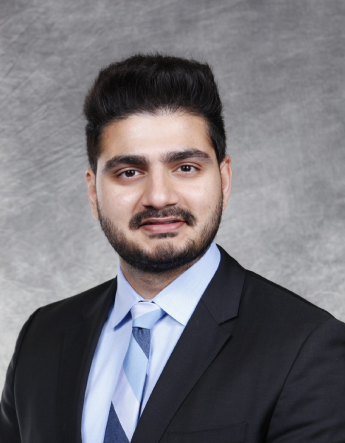No matter how complicated your condition may seem, you’re not alone. At Rivea, we bring together advanced treatments, expert care, and a compassionate approach to make your path to healing clearer and more manageable. Our goal is to provide the answers and care you need with confidence and ease.
Interventional Radiology
Image-guided Interventional Radiology
World-Renowned
Specialists, Personalized
Attention
Dr. Arjun Reddy, MBBS, MD
Chief Interventional Radiologist
Dr. Arjun Reddy, MBBS, MD, is a leading Interventional Radiologist specializing in minimally invasive, image-guided procedures for vascular, oncological, and pain management cases. He performed Hyderabad’s first Prostatic Artery Embolization (PAE) at AIG Hospitals, establishing himself as a key expert in the field. Dr. Reddy has been recognized as one of the Best Interventional Radiologists in Hyderabad.
With advanced training at Massachusetts General Hospital and Brigham and Women’s Hospital in Boston, he has honed expertise in cutting-edge interventions. He has presented research at the Society of Interventional Radiology (SIR) and trained in liver radioembolization in San Francisco. His commitment to innovation is redefining interventional radiology in India.

Dr. Arjun Reddy
MBBS, MD
Chief Interventional Radiologist
Vascular & Endovascular Surgery
Advanced Vascular & Endovascular Care
1. Head and Neck
2. Chest and Abdomen
3. Upper Extremity
4. Lower Extremity
- Acute Deep Vein Thrombosis Dangerous blood clot formation in deep veins, typically in legs, that can potentially break loose and cause life-threatening complications like pulmonary embolism.
- Pulmonary Embolism Critical condition where blood clots block lung arteries, causing sudden breathing difficulties and potentially fatal cardiovascular complications.
- Chronic Venous Insufficiency When leg veins struggle to return blood to the heart, it can cause swelling, pain, and skin changes. This condition can lead to venous insufficiency, phlebitis, post-thrombotic syndrome, or venous leg ulcers.
- Varicose Veins Twisted, enlarged veins in the legs that cause aching, swelling, and discomfort. Without management, they can progress to more serious circulatory complications.
- Claudication Leg pain caused by reduced blood flow during physical activity, typically resulting from peripheral artery disease. Patients experience muscle pain that subsides with rest.
- Chronic Limb Threatening Ischemia Advanced stage of arterial disease with severe reduction in blood flow, causing constant pain and high risk of tissue loss. Requires immediate medical intervention to prevent amputation.
- Diabetic Foot Serious complication of diabetes involving reduced circulation and nerve damage. Increases risk of infections, ulcers, and potential limb amputation due to poor wound healing.
- Non-Healing Wounds Chronic wounds that fail to progress through normal healing stages, often caused by poor circulation, diabetes, or compromised immune systems. Can lead to serious infections and tissue damage.
- Gangrene Severe tissue death caused by complete loss of blood supply, typically affecting extremities. Can result from advanced vascular disease, diabetes, or serious infections.
- Acute Deep Vein Thrombosis Dangerous blood clot formation in deep veins, typically in legs, that can potentially break loose and cause life-threatening complications like pulmonary embolism.
- Pulmonary Embolism Critical condition where blood clots block lung arteries, causing sudden breathing difficulties and potentially fatal cardiovascular complications.
- Chronic Venous Insufficiency When leg veins struggle to return blood to the heart, it can cause swelling, pain, and skin changes. This condition can lead to venous insufficiency, phlebitis, post-thrombotic syndrome, or venous leg ulcers.
- Varicose Veins Twisted, enlarged veins in the legs that cause aching, swelling, and discomfort. Without management, they can progress to more serious circulatory complications.
5. Unusual Vascular Problems
6. Vascular Infections
7. Vascular Trauma
Injuries to blood vessels from accidents or surgery that can cause significant bleeding and long-term circulation problems. Immediate medical intervention is crucial to prevent permanent damage.
8. Dialysis Access
Compassionate Experts,
Exceptional Care
Dr. Karthik Mikkineni, MD, FACS, FSVS, RPVI
Dr. Karthik Mikkineni, MD, FACS, FSVS, RPVI, is a leading vascular and endovascular surgeon specializing in complex aortic interventions, limb salvage, and carotid disease. As Chief of Vascular and Endovascular Surgery at the Oklahoma City VA, he advanced patient care, surgical innovation, and physician training. Now, as the founding director of RIVEA Vascular Institute in Hyderabad, he is transforming vascular care in India.
A former Stanford faculty member, Dr. Mikkineni helped build the Advanced Aortic Center and expanded access to cutting-edge vascular treatments. His research on aortic aneurysms has shaped global guidelines, and he has led national training programs. At RIVEA, he is introducing pioneering techniques like Transcarotid Artery Revascularization (TCAR) and advanced aortic endografts, setting a new standard for vascular care in India.

Dr. Karthik Mikkineni
MD, FACS, FSVS, RPVI
Chief Vascular Surgeon
Our Commitment to
Medical Excellence

Breaking New
Ground
We're proud to be the region's first dedicated vascular center, equipped with imaging technology that sees what others might miss.

You're More Than a Patient
We see the person behind every condition. Your questions, concerns, and comfort guide everything we do.

Compassionate Care, Close to Home
Our specialists bring techniques and knowledge from across the globe directly to your community.

Gentle Touch, Powerful Healing
Our minimally invasive approaches mean you spend less time recovering and more time living.
Stories of Healing
& Hope
Our patients inspire us every day. Read their stories of resilience, recovery, and renewed hope.

Your Questions,
Our Transparent Answers
Answers You Can Trust, Care You Can Rely On
We know that medical decisions can feel overwhelming, and having the right information makes all the difference. At RIVEA Vascular Institute, we’re here to ensure you feel informed, supported, and confident every step of the way.
Have questions about a procedure? Wondering what to expect before or after treatment? Need a second opinion?
You’ll find answers to the most common concerns about vascular and interventional radiology treatments, recovery, and preventive care.
- Straightforward explanations—no medical jargon
- Clear guidance on what to expect before, during, and after your procedure
- Personalized support for your unique health concerns
No question is too small, and no concern is overlooked. Your health, your decisions, your peace of mind—we’re here for all of it.
Still have questions? Reach out, and let’s take this step together.






